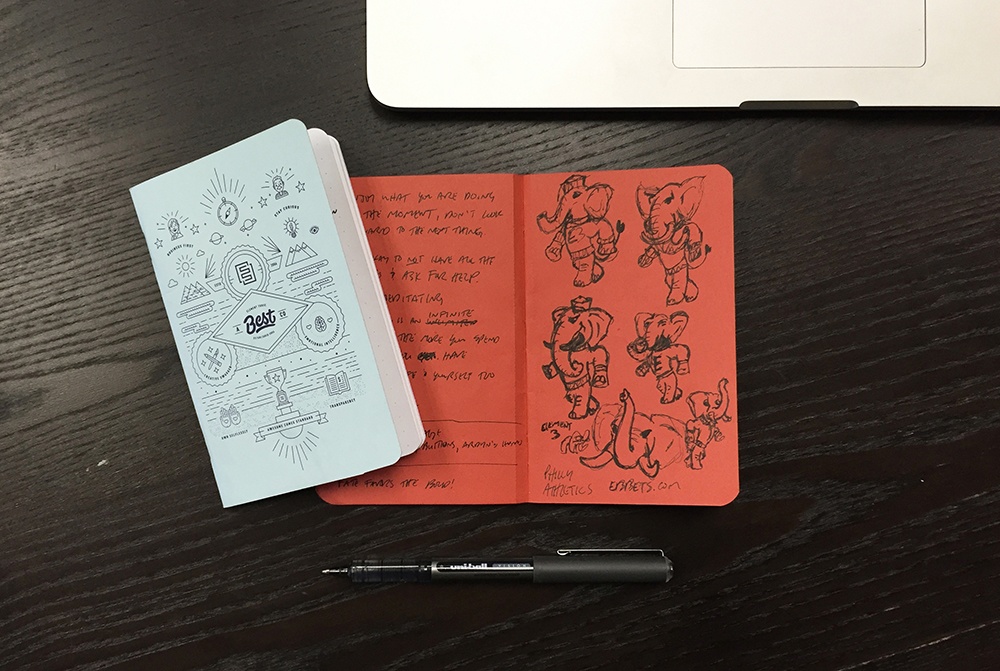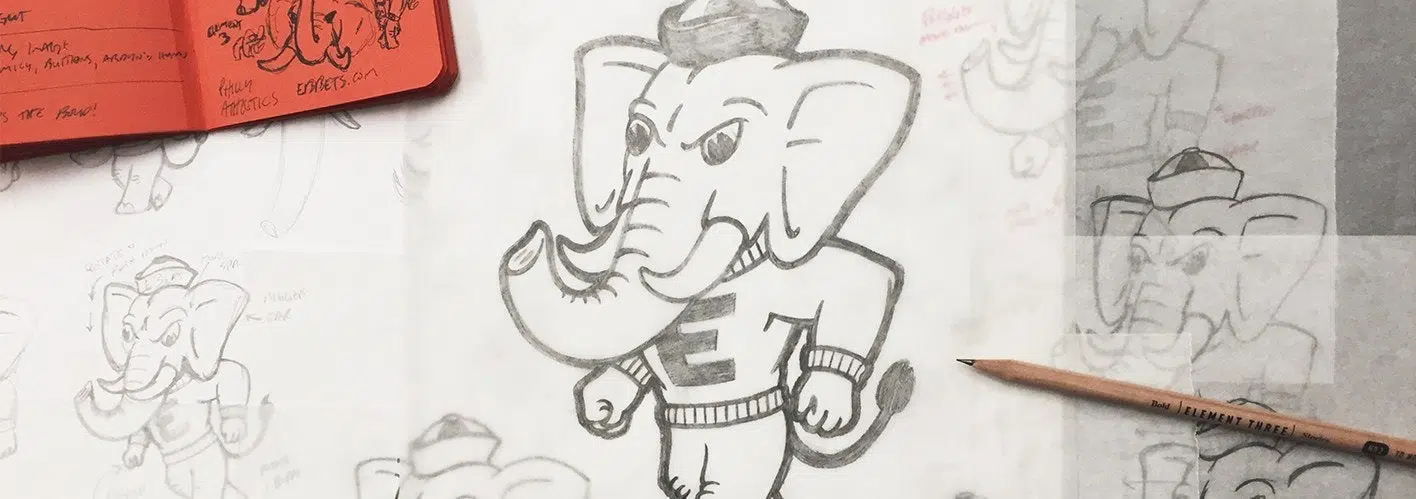When I sat down to write this post outlining my personal creative process, I took some time first to seriously consider whether or not the effort would be worth it, both for myself and for you, the reader. One of the values guiding our Element Three blog strategy demands that we write about what’s next instead of what’s been covered a thousand times already. My subject, the creative process, is nothing new – there are probably thousands of articles about this very topic.
But after pushing through my initial concerns, I came back to my original reason for choosing this topic in the first place: everyone, from the VP of Sales to the Lead Designer to the Accountant has a creative process. Your process might differ drastically each time you create (which isn’t really a good thing), but it’s still a process nonetheless. The problem is that most people don’t actually take the time to define it.
By overlooking this important component of creativity, we end up not only wasting time, but we get creations, products, and objectives that are far worse than what they should be. Perhaps creative professionals know this effect best: we always work best when we have guardrails. We don’t want to be told what to do, but we certainly would like to be pointed in the right direction. Your process should be flexible enough to allow you room to create, while still being somewhat structured – and keeping you moving in the direction you should be.
How to Define Your Creative Process
Defining your creative process is as simple as writing down the steps you take to create. You might think this sounds dumb, but without identifying the actual steps you take how do you expect to improve upon your process? This will afford you a holistic view of your process and allow you to identify areas of improvement.
I just recently read an interesting blog post by the fine folks at Sidecar entitled “Learning to be D.R.Y.” D.R.Y. is an acronym that stands for “Don’t Repeat Yourself.” Maybe you are repeating something every single time your start a project, doing the same work over and over again. Try to automate that specific task, or create a template to start from each time. This will allow you to shave time off of your process – maybe only minutes each time, but those minutes add up over days, weeks, or even years, and it becomes much more impactful.
The above thought leads right into the idea of the creative process always changing – not wholesale changes necessarily, but rather iterative tweaks. Look at ways you can make your process more efficient, as it will only help you create better. It is also important to look at other people’s processes, and not just creatives. Just as we look outside of our clients’ industries for inspiration, the same can be applied to the creative process. Be open to how others think about creativity and innovation.
My Approach to the Creative Process
Similar to how we’ve previously discussed our onboarding process, I’m going to share my own creative process – not because mine is a perfect process you should imitate, but just as a reference as you think about, develop, and refine your own. My hope is that some of this will resonate with you, and perhaps either reinforce your own creative process or help you to evolve it.
I break my creative process into 3 main parts: research, sketching and executing.
Research
I begin by gathering all known information on the project and defining my goals. For me, unless this is a project that involved zero collaboration (which is almost never the case), this intel typically comes either straight from a client or from a creative brief (for you, this could be an email, a discussion with your boss, or a team meeting). This is important because it allows you to figure out what you don’t know. Things always get missed: there is always something you didn’t think to ask, or that wasn’t in the brief. Reach back out to whoever you need to and get your questions answered.
Once I have the all the necessary information, I always start by listing out adjectives that describe the look and feel of the project, otherwise known as the tone. Depending on how well you know the client and how clear your initial guidelines were, this tone might either be well-defined or incredibly vague by this stage in the process.
Now on to actual research. This can come in many forms, but usually, I start on the internet. I am looking at what others have done for inspiration and starting to immerse myself in the task at hand. I also recommend getting away from your computer and phone and going out to explore. If you are working on a restaurant rebrand, perhaps you should visit other eateries and spaces that have a similar vibe to what you want to create. While I’m doing this, I am starting to take notes and draw small thumbnails.
The final and perhaps most important part of this phase is incubation. This sounds crazy, but you just have to put the job down and walk away from it. This could be for a couple hours or a couple days. It gives you time to think about the task without thinking about it, which will allow you to land on a much more original idea since you are stepping away from the inspiration you just consumed.
It doesn’t start with an idea, rather you need to feed your brain information to help arrive at said idea.
Sketching

I like the small memo books because I can fill the pages quickly and move on, it keeps me from getting hung up on one particular idea.
Don’t overthink the word sketching. During this phase, I will use a mix of thumbnail sketches and notes. Your sketches should be small and quick. It is important to get the ideas out quickly, so you can move onto the next one. The obvious solutions usually make it onto the paper first. Don’t settle for anything, make yourself push past the obvious and explore many different directions.
While I’m sketching I start to see what this can be in my head. You can draw upon your inspiration and research as well as other past experiences. This is your opportunity to come up with a unique and functional solution. At the end of this, you should have a handful of ideas that you feel are the best and worth pursuing further.
Execution
By the time you have researched, sketched and sketched some more you should have a pretty good idea of the direction you want to go. This should be the easiest part of the whole process. Think of it like a road trip: once you research and map it out, driving is the easiest part. I feel like it is important to note that sometimes once I start executing, I may land on something completely different from what I originally planned. That is okay and it is natural. This will usually come from iterating on the computer. Allow yourself to get off track sometimes, just make sure you aren’t forgetting your end destination.
So just to recap, define your process so you can identify ways of improving. Research, sketch, and execute. It all seems pretty simple when you think about it.
What’s your creative process? Email marketing@elementthree.com to share the steps you take to create, and we might feature them in an upcoming blog post on the topic.




